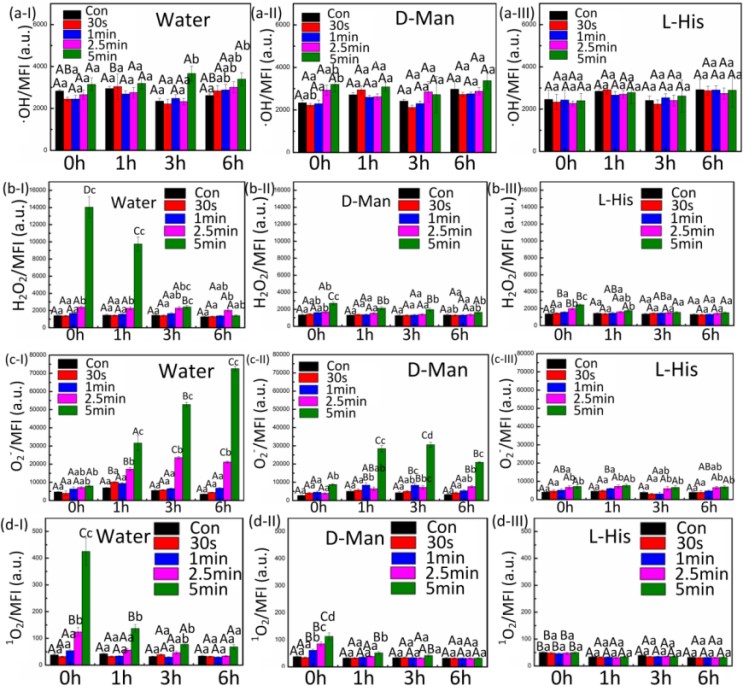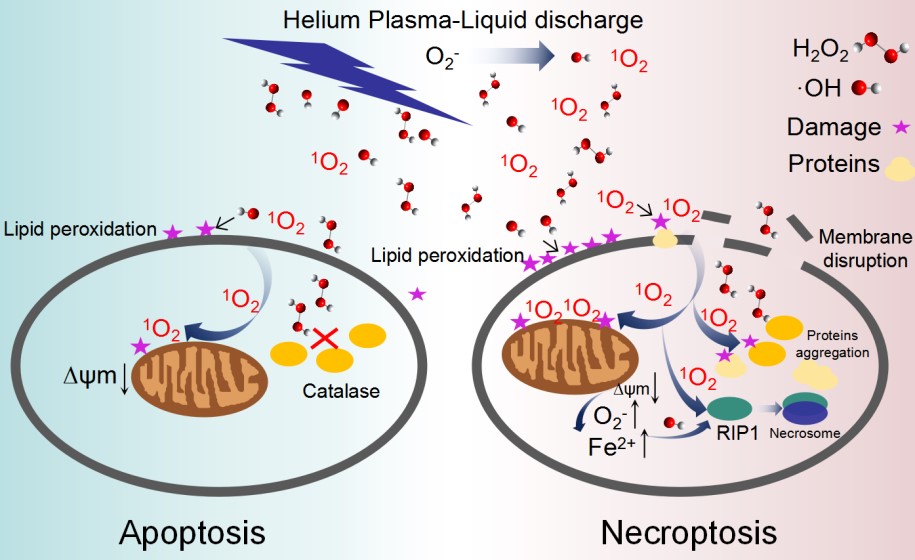Researchers led by Prof. HUANG Qing from the Hefei Institutes of Physical Science (HFIPS) of the Chinese Academy of Sciences (CAS) have recently proved important role of singlet oxygen (1O2), a kind of Reactive Oxygen Species (ROS), in synergistic antimicrobial mechanism when studying the fungicide mechanism of Cold Atmospheric Plasma (CAP). Results were published in Science of the Total Environment.
CAP is highly effective in inactivating harmful microorganisms. By producing a variety of ROS, CAP can induce oxidative stress in microorganisms, thus leading to different modes of death. Understanding the role of ROS in killing harmful microorganisms is of great significance and can provide guidance for efficient killing of microorganisms in the environment.
In recent years, Prof. HUANG's group have conducted systematic research on the mechanism and application of non-thermal plasma microbial disinfection and sterilization. In this study, the roles of ROS generated by plasma in killing fungi, including hydroxyl radical (·OH), 1O2, hydrogen peroxide (H2O2) and superoxide anion (O2-), were scrutinized, respectively.
Particularly, the synergistic effect of singlet oxygen with other plasma-generated ROS in fungi inactivation was found and explained.
Based on the previous study, the researchers investigated the generation of ROS (·OH, 1O2, H2O2, O2-) by CAP, and explored their relationship with various intracellular ROS (·OH, 1O2, H2O2, O2-) over time.
According to the researchers, among the plasma-generated ROS, ·OH mainly causes fungal inactivation by disrupting the wall membrane structure, while 1O2 has a synergistic effect with other ROS in killing fungi. Plasma-generated 1O2 can induce the depolarization of mitochondrial membrane potential (MMP), and the degree of MMP depolarization determines the fate of the fungi.
During short-term of plasma treatment, mild mitochondrial damage can lead to the onset of apoptosis. In contrast, during prolonged treatment, plasma-generated ·OH will severely damage cell membranes, and elevated level of 1O2 will cause severe depolarization of MMP, resulting in increased intracellular O2- and Fe2+, as well as cell necroptosis.
Another finding by the team was that 1O2 could lead to intracellular protein aggregation and the production of necrosome RIP1/RIP3, ultimately leading to necroptosis.
This study improves the understanding of the fungicidal mechanism of CAP and provides theoretical guidance for more applications of plasma technology.
This work was supported by the Anhui Provincial Key Research and Development Plans and the China Postdoctoral Science Foundation.








